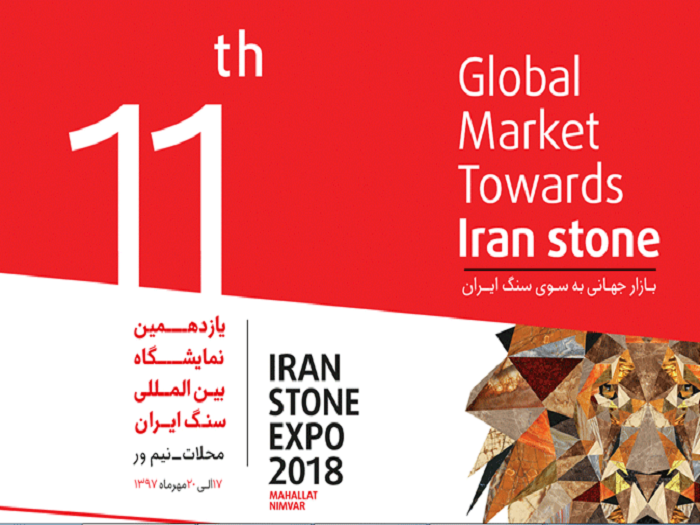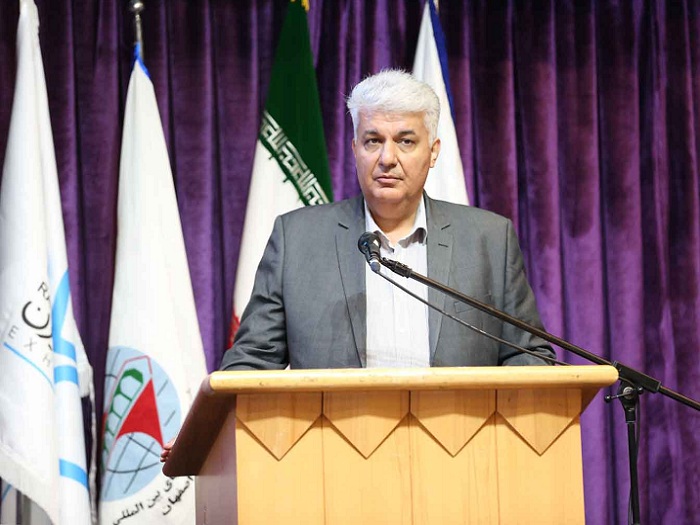Investigation of Stone Export Problems in Exhibit 11

The world's ornamental stone reserves are estimated at around 15 billion tonnes, including granite, marble, marble, lime stone, travertine, porcelain and crystal. Iran ranks fourth in the world rankings in building and decorative stones, but it ranks first in the world in terms of quality, color and variety of building stones.
According to the International Stone Exhibition of Iran, Iran is one of the leading countries in the field of ornamental stone production with rich stone mines and is one of the best in the world in terms of diversity, abundance and richness of ornamental stone reserves.
Iran has the largest reserves of ornamental stones in the world and is well known in the world for producing granite, travertine and marble. According to the official statistics of the Statistical Center of 2013, the total number of mines in the country was five thousand sixteen and twenty-five percent, one thousand three hundred mines, except for decorative stones.
The world's ornamental stone reserves are estimated to be around 15 billion tonnes, including granite, marble, marble, lime stone, travertine, porcelain and crystal. Iran ranks fourth in the world rankings in building and decorative stones, but it ranks first in the world in terms of quality, color and variety of building stones.
China's share of the global increase in stone production in 2017 amounted to one million tonnes, Turkey one and a half million tonnes, India one million tonnes and Iran seven hundred thousand tonnes.
Iran was also the 13th largest exporter of processed stone this year after China, Turkey, India, Egypt, Italy, Brazil, Spain, Portugal, Greece, Canada, Belgium and France.
The 11th Iranian Stone Exhibition in Mahalat, with more than 500 participants from all over Iran, is taking place in an area of over ninety thousand square meters.
The exhibition consists of twenty thousand square meters of indoor space and seventy thousand square meters of outdoor space and aims to increase and increase the export of Iranian stone.
Attention to the ornamental stone industry leads to sustainable employment
"One of the problems with Iranian stone exports is that the processed stone is often exported to neighboring countries at very low prices, which is one of the most important challenges for exporting the stone," said one local miner at the Iranian Stone Exhibition.
Reza Moradi adds: At present, Iran's share of stone exports to a country such as India is twenty-seven thousand tons a year, equivalent to two and seven percent.
The miner continues that attention to the ornamental stone industry leads to sustainable employment, increased GDP, increased non-oil exports: The boom in the stone industry in the country despite the country's high capacities and capabilities is needed. Including paving the way for better quality production.
Moradi says that when the market does not face a problem, the producer will also have no problem, but if the market is in turmoil, the manufacturer will certainly be challenged at its own expense, requiring government support.
Referring to the city as one of the country's stone production hubs, he said: The Neighborhood Stone Exhibition is a valuable opportunity to introduce the City of Mahaleh's capacities in the field of stone production.
Iran's ornamental reserves are two and a half billion tonnes

A member of the Iranian Stone Industry Policy Council also declared two and a half billion tons of ornamental stone reserves on the sidelines of the Stone Exhibition: There are about 1,200 active ore mines in Iran, while about 2,000 Eighty-nine ornamental mines are registered.
Mohsen Glijani says: Iran's export of ornamental stones last year was 1.5 million tonnes worth $ 300 million.
He pointed out that Iran is one of the four largest producers of crude in the world: Most of Iran's crude exports are crude, and sanctions have so far had little effect on reducing exports.
One of the most important challenges of the country's stone industry, a member of the Iranian Stone Industry Policy Council, said the lack of modernization of machinery in mines and stone processing units, the increase in the cost of finished products in mines, the lack of waste management and the inability to identify target markets.
Glijani said: modernizing machinery in mines, formulating and implementing a cost-per-unit system, establishing export consortia, studying target markets, advocating for attracting foreign investment in the mines, etc., are part of effective measures to address the challenges ahead.
The foreign broker buys the stone in rials and sells it in dollars
Ahmad Tavakoli, a member of the board of directors of the Iranian Stone Exhibition, said: "One of the problems that currently exists in the field of stone exports is that the government says that any amount of money earned through exports should be registered in the Nima system, which has caused the foreign broker to export the stone." Buy in rials and sell in dollars.
"How can exporters export their stone and bring it to the right currency," he said.
A member of the board of directors of the Iranian Stone Exhibition said the freight rates are fluctuating, adding that there are about 600 million stones ready for export, but no car to carry them, while there is no room to hold that amount. We cannot produce new stone under these conditions.
Tavakoli emphasized the need for government support for the stone producers and continued: The government should have the utmost cooperation in importing the necessary tools and tools for the miners.
He also noted the high profitability of banking facilities from other problems and pointed out that this year's rock fair was less welcoming than in previous years, partly because of the lack of cooperation from truckers.
Reluctance of officials regarding the rock is a serious concern for miners
The head of the Iranian Mining Association's commission for mining says that what concerns the mine activists more than the sanctions is that officials are reluctant to engage with the industry.
Aziz Mirzaiian adds: Unfortunately, in recent months, exchange rate fluctuations have had a major impact on the economic growth of the mining sector.
"Miners need mining machinery and equipment and spare parts, part of which is imported, and exchange rate fluctuations can affect the price of these products," he said.
Head of Mining Commission of Iranian Stone Association says: Providing cheap machinery and facilities, tax exemption and providing cheap facilities to producers and efforts to attract investment to provide more growth and development of this industry in the country .
High taxes are a serious challenge for stone producers

The head of Iran's mining house also cited high taxes, high interest rates on banking facilities, lack of up-to-date mining machinery, high shipping costs and traditional management as major problems for miners.
"Unfortunately, these challenges have caused the manufacturer to lose competitiveness and gain a small share of global markets," said Bahramman.
He says: About 12 million tons of ore is extracted in Iran annually, but its export is two hundred and fifty to four hundred million dollars, which is very low.
The head of the Iranian Mining House announced the activity of 20,000 people in ornamental mines across the country and said: "This sector has a high capacity in employment and if supported it could double the number of employees in the sector.
* Fars










